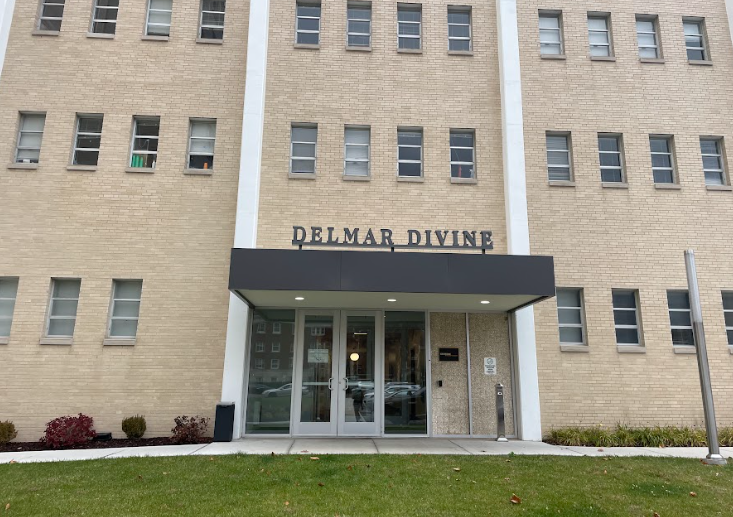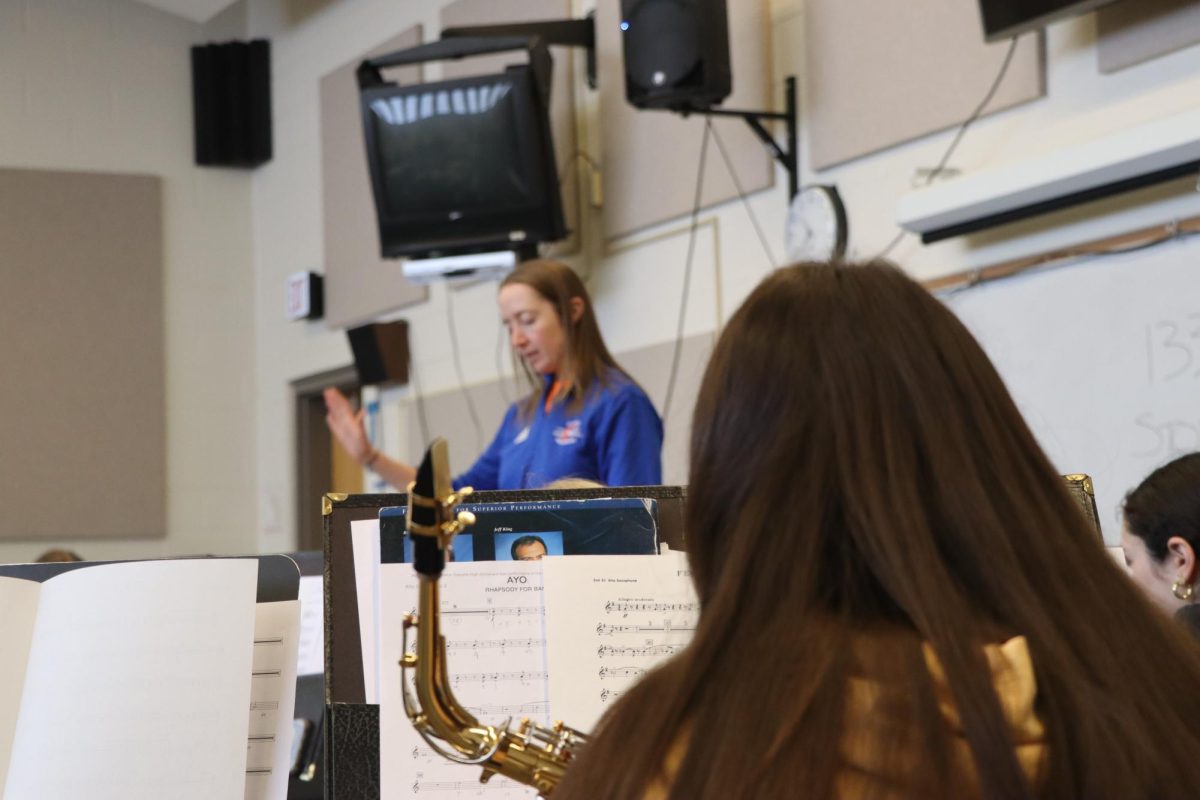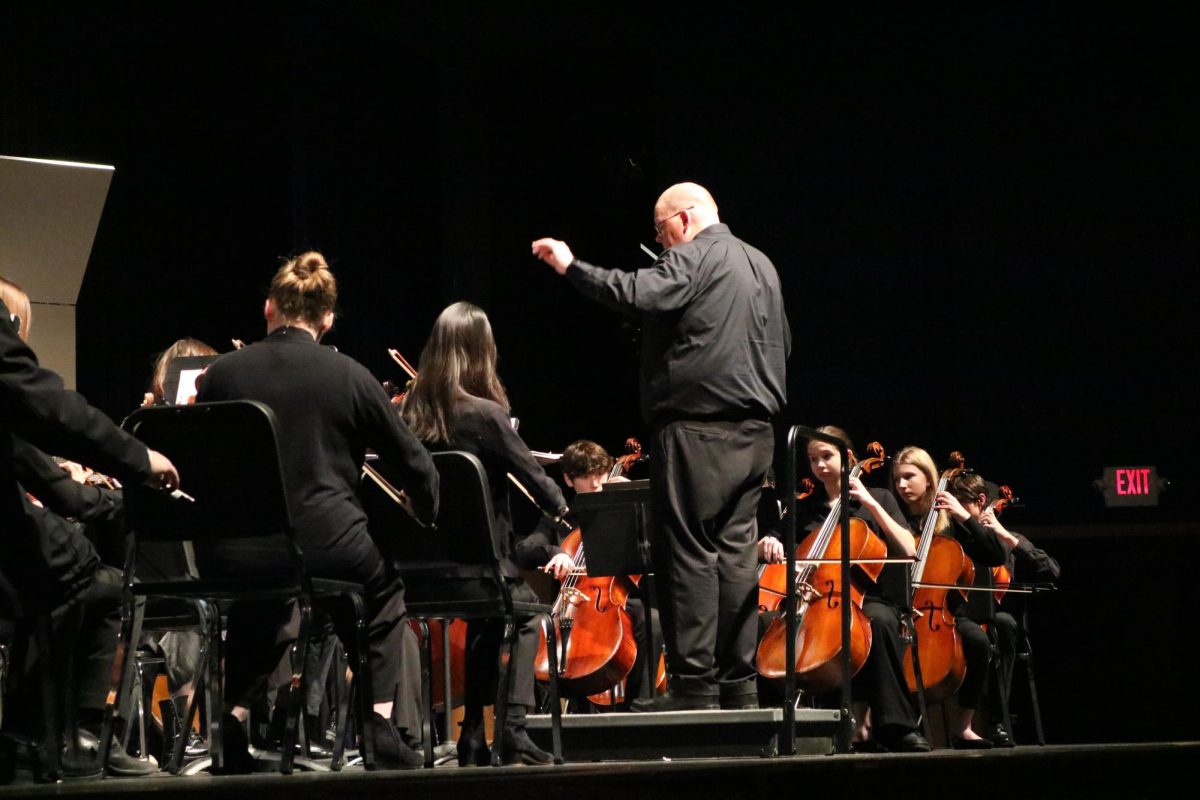The division begins in elementary and middle school with so-called “extensions†classes, which offer faster pace and more in-depth applications than what the other students receive. Once students reach the high school, three of their four core classes become tiered as they are delegated to honors or non-honors classes. Yet some aspects of the honors placement system have begun to receive criticism.
For most subjects, the decision of whether a student goes into an honors or non-honors class is fairly formulaic. For science and English, the judgment is based on multiple criteria, including scores on standardized tests such as the MAP and Explore, grade patterns, and teacher recommendations.
For math, though, only teacher recommendations are taken into account, and there is a fairly high percentage of students in honors math classes. Math Department Chair David Kohmetscher estimated that approximately 30 percent of the freshman and sophomore classes are in honors math. Kohmetscher said that this leads to less in-depth classes.
“You can have an honors class that encompasses the top 30 percent, but by choosing that large a class, in essence you’ve chosen to cover less material and chosen to have the level of discussion at a lower level,†Kohmetscher said.
In particular, Kohmetscher said that students are being sold short on statistics. Honors Alg./Trig., for example, only has time to cover a third of the hypothesis testing and statistical analysis chapter. If the pace could be quickened by two weeks, Kohmetscher said that students would be able to cover that content. Thus, the problem becomes that the class is slowed by the bottom five or ten percent.
“The dilemma is oftentimes that it’s the kids asking the remedial question, asking to see the same question two or three times, that can become frustrating for that top 10 percent,†Kohmetscher said. “And what I really see when I look at the grades is we’re spending a lot of time at the level trying to turn C understanding into B understanding, and very little time in class turning B understanding into A understanding. And if we as a district decide that it’s great to have the top 30 percent in honors, then we have to realize that our B population is probably going to be a little bit bigger, some of those kids are going to earn C’s, just so we can move fast enough to serve those top 10 percent as well as we can.”
However, some students argue that an honors class should focus more on bringing the bottom of the class up to a B-level, rather than taking the B students and helping them develop into A students.
“I would say improving the bottom half because if the top half is already doing well, they can figure things out and they can probably challenge themselves, but the kids that are at the bottom, if they’re not helped, they’ll just fall off the radar screen and totally tank,†sophomore Andrea Stiffelman said. “It’s a lot easier to stay at the top than it is to be on the bottom trying to get back up.â€
Yet the issue is a double-edged sword. Having such a wide breadth of students in an honors class and therefore holding discussion at a lower level often leads to the upper-level students becoming frustrated with a pace and depth that fails to challenge them.
“I don’t think I could sit in class with 30 percent of the class in here and hold our conversation at that A/B level and not have kids very, very frustrated,†Kohmetscher said. “But I think that in all likelihood the fact that we spend a lot of time at that B/C level has just as many kids frustrated, but I think it’s the kids at the top that are frustrated. And I feel pretty strongly that an honors class ought to be targeted at servicing the kids at the top. The reason we should have an honors curriculum is to challenge our best students; it shouldn’t be a place where that 70th or 80th percent student is in there dictating pace, dictating level of discussion. If they want to be in there, and they want to keep up with the pace, and they want to rise to the challenge, more power to them –the problem is that they don’t. And when we get a lot of C’s we get parents complaining, and when we don’t stop to answer questions, we get parents complaining.â€
To solve this problem, Kohmetscher said that he would like to see a different system of selecting students for the honors track out of middle school. This system would be similar to that of the English and science departments, incorporating multiple criteria.
“If we come up with the criteria – the algebra skills – then I think the other issues take care of themselves,†Kohmetscher said. “Then I think we could move at the pace where we could get to the statistics content. I think if we’ve identified the right kids in there, then the level of discussion gets amped up enough so that we’re talking at that A/B level instead of that B/C level.â€
Kohmetscher said that the department came close to implementing a placement test for eight graders. He said he hoped a test would be given to students this year so that the department could begin taking data and comparing students’ scores on the test to how they did in freshman and sophomore math classes. The department would then be able to construct a more fair and accurate placement test to begin refining the placement process.
Many students disagree that test scores should determine what level class a student goes into. Instead, some advocate more student-decision.
“They should be guided by the teacher and the counselor and get their input, but in the end it’s their life and if they want to really challenge themselves, then that’s their thing, and if it’s too challenging they can always go back down,†Stiffelman said.
“I think it should be a decision between the student and the teacher,†sophomore Alex Yepez said.
Another part of the process receiving criticism is the parental override system. If a parent or student is unhappy with the class that a teacher has recommended them for, they can follow the protocol, as it is called, in an effort to override the teacher’s recommendation. According to CHS principal Louise Losos, this involves filling out a form, talking with the teacher and department chair, and eventually submitting the form to the administration for approval.
“There are times when as an administrator we can say no but that’s very, very rare,†Losos said. “If it’s from non-honors to honors, it’s typically a rubber stamp, but we want people to go through the process.â€
Ignoring a teacher’s recommendations has it’s “pitfalls,†as Losos said. For example, if a student wishes to switch out of an honors class that they entered against the recommendation of a teacher, their grades are not simply wiped clean.
Though Kohmetscher said that parental overrides are not a problem in math classes, English is a different story. Though the number of overrides is not having a palpable effect on classroom, some find fault in the system.
“I just think that sometimes we’re surprised by the students who are in an honors class and we didn’t expect them to be, and we might backtrack and say ‘How’d that happen?’ and they say ‘Well there’s an override,’ said Emily Grady, who teaches honors and non-honors English. “But sometimes we’ll kind of retrace the steps and find that maybe not all the steps of the process were taken…. I also think there’s probably a situation where some people are more savvy about it than others, maybe know the ropes or know a little bit about how schools work, maybe they’ve had other kids that have gone through the school, and they kind of know who to go to talk to, and maybe some people don’t know that system and they don’t pursue it.â€
Grady said that she encourages students to talk to teachers about placements that they are unhappy with and that she understands that sometimes parents know their students better than a teacher. Nevertheless, Grady said that many English teachers are irritated by the overrides because of the connotation that they carry.
“I would say most people are frustrated by it, I wouldn’t say anybody embraces it, because it’s kind of like people are second-guessing you,†Grady said. “We put an awful lot of effort and thought into it, and I think when people challenge it then we’re a little frustrated.â€
Losos said that the current parental override protocol was drafted four years ago and that she does not see it changing anytime in the near future. Yet even if the parental override system and math placement criteria are mended, it seems unlikely that the issues surrounding such an important and at ties controversial process will ever be completely vanquished.
“One of the complaints we sometimes get is the gap between honors and non-honors, but the problem you have is that no matter where you make that cut, there’s going to be someone who is right up against it,†Losos said. “There’s always going to be someone who just didn’t make it into honors, so we try to have a very rich non-honors curriculum, and I think we do.â€






